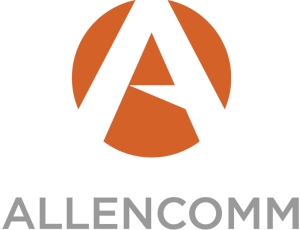How A Blended Learning Approach Impacts Your Training
Because training is such an important contributor to organizational success [1], it’s crucial that it is thoughtfully and effectively delivered. Blended learning, when done right, is one way to achieve just that. By using the right mix of eLearning, classroom instruction, coaching, tools, resources, and apps, blended learning offers learners (and instructors - BONUS!) an improved training experience.
Consider the following benefits of using blended learning to more effectively deliver training and meet learner needs.
1. Blended Learning Expands Reach
Blended learning brings together the best of both classroom learning and eLearning [2] to reach and appeal to a wider variety of learning styles and circumstances. Classroom learning allows for direct interaction between learners and the trainer, as well as learning through hands-on activities. With online methods, learners can move through content at their own pace, and even revisit content for additional clarity. From these examples, it’s apparent that blending classroom and online methods could be the ideal training solution.
Additionally, by digitizing training content for blended learning, organizations are able to deliver high-quality training to a large number of employees all over the world at a low cost. It also makes it possible for learners to access learning content from mobile devices or personal computers anytime, or anywhere.
2. Blended Learning Increases Engagement
A blended approach to learning involves the use of a variety of content types. As learners participate in face-to-face training and interact with relevant and actionable video, audio, text, presentations, and other types of bite-sized content, they are more likely to engage, retain information, and apply what they learn to their job.
We know that face-to-face training has many benefits, but it requires aligning many schedules, which can be complicated and inconvenient. By incorporating an eLearning component for training, learners are given more flexibility to access and participate in certain portions of training on their own schedule, when they are better able to engage with the learning content.
3. Blended Learning Provides Useful References
Online learning, in conjunction with face-to-face learning, provides a platform for organizing and presenting material that learners might need to reference to prepare for in-class activities. For example, learners might be asked to complete an online reading assignment and online quiz before attending class, where they’ll have a related discussion and be better prepared to participate.
Blended learning can also be useful by providing a home for content to reference after training. In the event that a learner would find it helpful to review training material at a later date, they can revisit eLearning modules to re-learn elements they may have forgotten.
4. Blended Learning Facilitates Collaboration
Delivering a blended learning strategy increases the opportunities for students to collaborate, which results in a deepened learning experience [3] and improved business performance and profitability [4]. By utilizing online tools to complete certain tasks like lecturing or presenting content, more face-to-face training time will be available for collaborative work, problem-solving, and guided practice.
Further, with the use of tools like wikis, discussions, and chat, learners are able to collaborate and exchange knowledge and ideas even when face-to-face training has ended.
5. Blended Learning Simplifies Assessment
Supplementing face-to-face learning with online tools simplifies the assessment process for trainers. Using online tools, they can quickly and easily administer quizzes or tests to assess how learners are doing.
In addition to testing, many online learning platforms have reporting capabilities [5] that automatically generate statistics and analytics (i.e. scores, topic mastery, learning outcomes, etc.) that trainers can use as a guide for their instruction. This kind of information would be difficult to gather in a face-to-face setting, which makes a powerful case for a blended approach to training. Reporting capabilities not only make things easier on you; they also make your training investment worth it.
If this list of benefits doesn’t convince you, research shows that "blended learning has the proven potential to enhance both the effectiveness and efficiency of meaningful learning experiences" [6]. The impact of effective blended learning is clear.
Are you currently using blended learning in your employee training strategy? If so, what have you found to be most effective for engaging and transforming your workforce?
References:
- LMS 101: Rethinking Your Approach To Employee Training
- Getting Started with Designing a Blended Learning Course
- LMS and Blended Learning: How Should Your Company Use Them?
- Why Collaboration is Vital to Corporate Learning and Development Strategy
- 5 Benefits Of The Blended Learning Approach
- Blended learning: Uncovering its transformative potential in higher education


